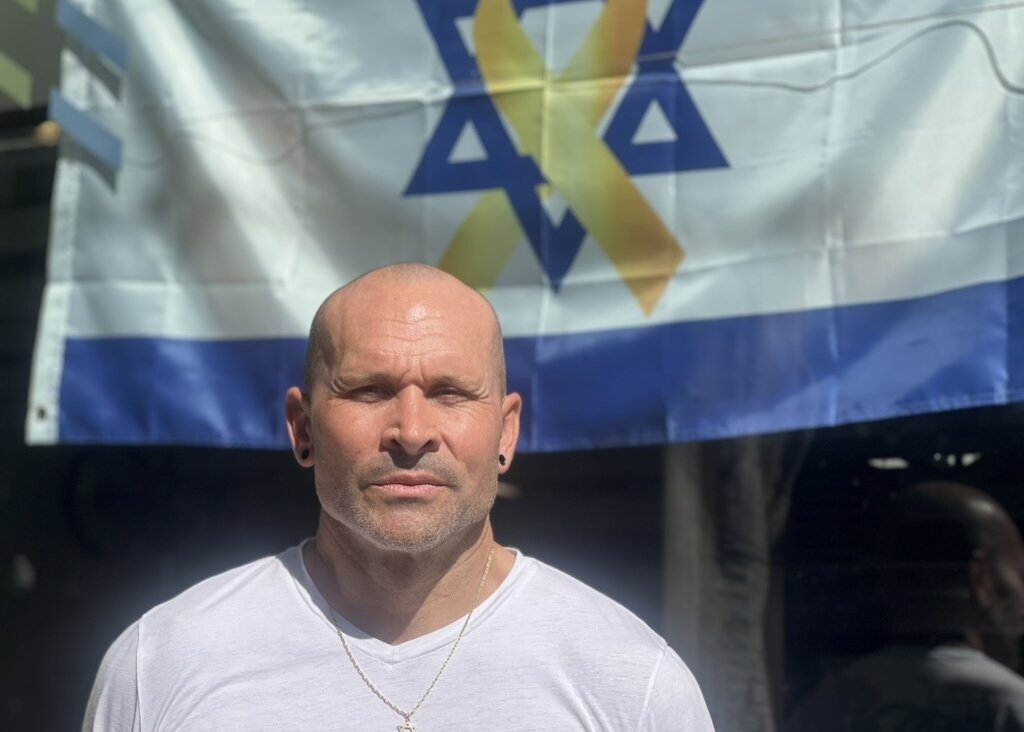On Tu B’Shvat, why trees are the urban infrastructure project we desperately need

Graphic by Angelie Zaslavsky
In 2021, we need to heed the tenets of Tu B’Shvat, the Jewish “New Year of the Trees,” perhaps more now than any time in our history.
Humans have always relied on nature — forests, watersheds, meadows, rivers, lakes and oceans — to create and provide a safe and viable habitat for humans and critters to live, love, and thrive.
Nature has always been our life support system providing fundamental ecosystem services like water supply, livable temperatures, pollination of fruits and vegetables, decomposition and recycling food waste and poop into more fertility for growing food, abundant clean water, fiber, a range of moderate temperatures which provided relative safety and health for us to thrive.
But as humans have dominated, conquered and consumed nature, we’ve increasingly and often unwittingly compromised and destroyed those life support systems.
Not long ago we reached a tipping point called global warming. Our unabated consuming, wasting, polluting has overwhelmed and compromised nature’s ability to clean up after us and sustain us. That realization must trigger to take Tu B’Shvat with dead seriousness.’
Increasingly severe and extreme weather is taking a greater toll each year, with hotter hots, drier dry’s, wetter wets producing increasingly destructive, costly and deadly fires, heat illnesses and death, alternating droughts and flooding, and increasingly threatening the security of our food supply.
And as we’ve seen with COVID-19, in America and around the world, the heaviest impacts and losses are born inequitably by lower-income, disadvantaged communities. While initially disproportional, the accelerating and growing losses are diminishing and threatening the security and quality of life for all of us.
As noted author and UCLA Professor Jared Diamond documents in his best-selling book “Collapse,” the cascading conditions that led to the destruction and disappearance of civilizations throughout human history began with the cutting down of trees and forests. Thankfully, Diamond also provides many examples of civilizations that have replanted their trees and forests, thereby restoring their water and food supplies, protections from climate extremes and increasing civility.
I like to think our fore-fathers and mothers observed the same trends when they created Tu B’Shvat—the annual holiday that reminds us to fully and deeply appreciate the nature of trees along with their services and gifts…lest we forget.
Here’s the good news: Scientists, ecologists, and economists have for decades shown in projects around the world, that instead of fighting to conquer or control nature, we can learn from and partner with her, greatly enhancing restoration ecosystem services and our own physical, mental and financial health and safety.
With a new president that believes in science and is ready to invest billions in mitigating and helping us adapt to climate change, we have an unprecedented opportunity to move quickly and restore our ecology and our humanity by creating an urban infrastructure of trees.
Science has identified and quantified the magnitude of human life and health protection and support services trees provide to us and the ecosystem: Amongst them:
· Communities of trees can cool down urban neighborhoods by as much as nine degrees, sufficient to save human lives in extreme heatwaves. Note that in Los Angeles today, if you are a person of color you are 46% more likely to die on the fifth night of a severe heatwave than a white person, because you are more likely to live in a neighborhood with under six percent tree canopy cover, as opposed to higher income neighborhoods in L.A. with 25% or more tree cover.
· As native trees like coast live oaks and valley oaks grow, they create a large “sponge” community underground, comprised of leaves, mulch, compost, bugs, microscopic fungi, reptiles and mammals, that can capture, clean and store or convey the groundwater aquifer below, as much as 120,000 gallons in a 12-inch flash flood, thereby preventing water pollution, and flooding and adding to local supplies. (LA imports 90% of its water from three rivers across the Southwest, but could meet half its water supply needs by capturing the rainfall),
· Some native trees, like oaks, are so dense and moist they can protect homes from fires by catching burning embers without igniting,
· Fruit orchards can provide urban residents in low-income areas with abundant fresh produce. Doing this correctly is earth science but not rocket science. It requires smart infrastructure: We must put the right tree and right place —any tree anyplace won’t necessarily produce the intended healing results and can be unwittingly destructive.
It can also build community. In the early onset of climate change-caused flood disasters to hit L.A. in 1998 and 2000, I built and led a “crowd-sourced” disaster relief operation that helped plant thousands of trees to lessen the impact of flooding, mudflows and landslides across all the hillside areas of Los Angeles.
We first mobilized our tree planters, then reached out to the whole community, attracting thousands of volunteers including off-road vehicle clubs, ham radio operators, carpenters, and students — across racial, political and ideological lines. We formed an army of 3,000 volunteers which saved over 1,200 homes.
The off-roaders had bumper stickers on their monster trucks that said, “Kill a Sierra Clubber,” but we found amazing appreciation for one another through our cooperation — and that cooperative spirit continued to build for years as we moved into forest restoration and neighborhood planting.
That may be the true urgency of Tu B’shvat— to use trees to save the planet, so we can save one another.
Andy Lipkis is project executive of Accelerate Resilience L.A. and the founder of TreePeople. [email protected]
















